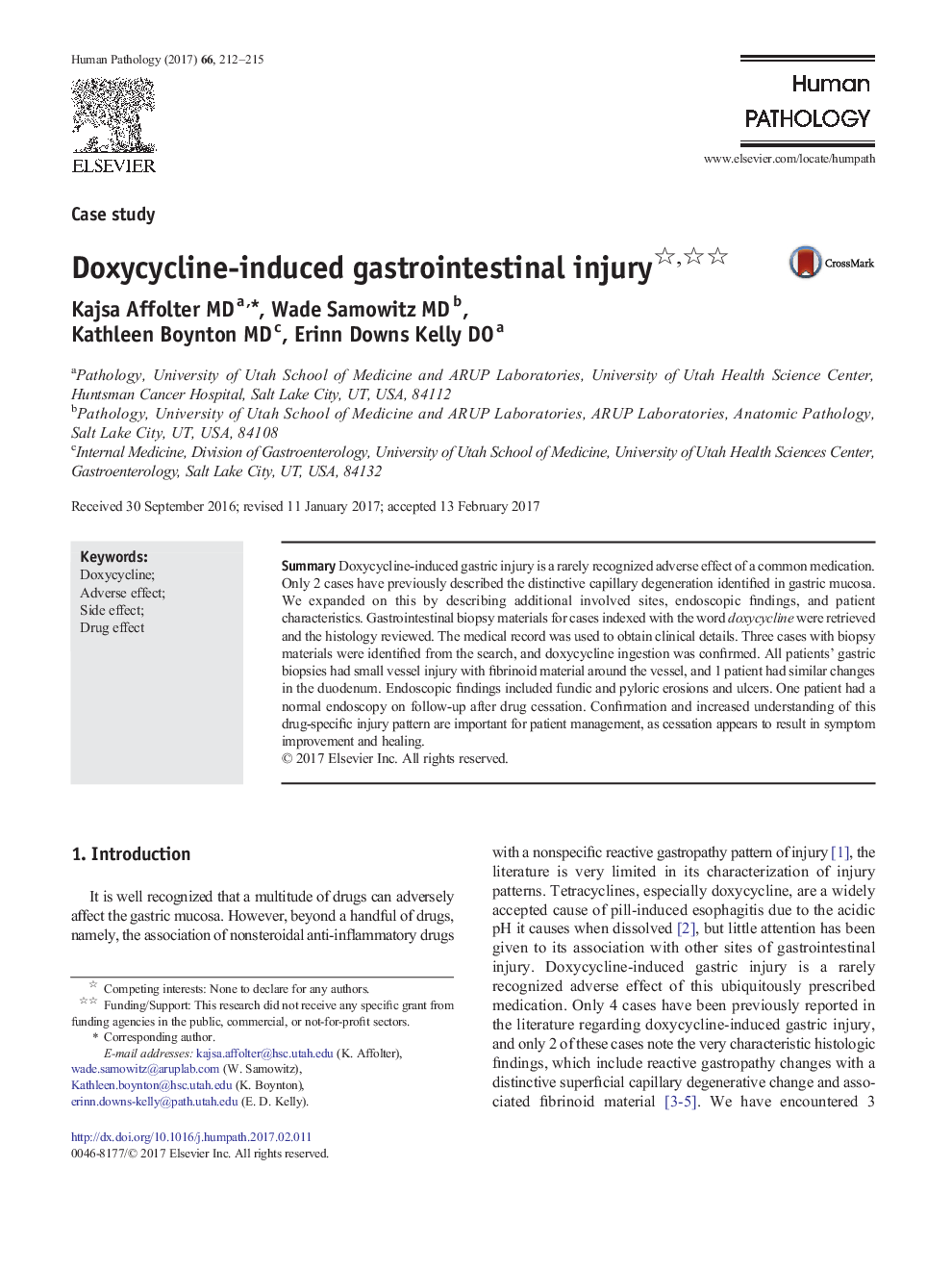| Article ID | Journal | Published Year | Pages | File Type |
|---|---|---|---|---|
| 5716138 | Human Pathology | 2017 | 4 Pages |
â¢Doxycycline can cause gastric and duodenal damage with vasculature alterations.â¢The distinct change to superficial capillaries shows eosinophilic disrupted walls.â¢Increased awareness of the injury may help identify lesions with greater frequency.
SummaryDoxycycline-induced gastric injury is a rarely recognized adverse effect of a common medication. Only 2 cases have previously described the distinctive capillary degeneration identified in gastric mucosa. We expanded on this by describing additional involved sites, endoscopic findings, and patient characteristics. Gastrointestinal biopsy materials for cases indexed with the word doxycycline were retrieved and the histology reviewed. The medical record was used to obtain clinical details. Three cases with biopsy materials were identified from the search, and doxycycline ingestion was confirmed. All patients' gastric biopsies had small vessel injury with fibrinoid material around the vessel, and 1 patient had similar changes in the duodenum. Endoscopic findings included fundic and pyloric erosions and ulcers. One patient had a normal endoscopy on follow-up after drug cessation. Confirmation and increased understanding of this drug-specific injury pattern are important for patient management, as cessation appears to result in symptom improvement and healing.
